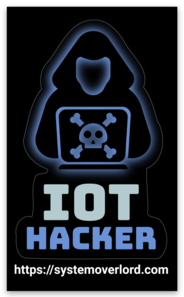Hacker Summer Camp 2018: Wrap-Up
25 Aug 2018 in Security (Reading time: 5 minutes)I meant to write this post much closer to the end of Hacker Summer Camp, but to be honest, I’ve been completely swamped with getting back into the thick of things. However, I kept feeling like things were “unfinished”, so I thought I’d throw together at least a few thoughts from this year.
BSides Las Vegas
I can’t say much about BSides as a whole this year, as I spent the entire time Gold Teaming for Pros vs Joes CTF. (Gold Team is responsible for running the game infrastructure, scoreboard, etc.) It was a great experience to be on Gold Team, but I do miss having a team to support and educate. Overall, the CTF went fairly well, but there were a few bumps that I hope we can avoid next year.
BSides also announced that they are ending their free badges. In some ways, I’m disappointed, but I also understand the reasons they are doing this. Even though I’ve had a badge included with my participation in the PvJ CTF for years, I’ve also been a personal sponsor of BSidesLV for those years as well. I’m lucky enough to be well-employed in the industry that BSidesLV supports, and I want to support their mission. I hope others will do so as well, but I also want to try to find a way to support those who aren’t able to shell out for a badge. Once details are announced for badges next year, I’ll look for an opportunity to support passionate students in our community.
DEF CON 26
DEF CON 26 was an incredible event. I know there were some bumps and warts to it, but I had a great con. (Also, I think it’s the only conference I attend that I refer to simply as “con”.) The villages are my favorite part of DEF CON, and the villages were in rare form this year with the expansion.
This year was my first year speaking at DEF CON (as a village speaker) and I am incredibly humbled by the experience. To think that something I had done was seen as interesting enough for 150 or so attendees to choose to spend 45 minutes of their time listening to me really makes me feel like I’m making an impact. The audience was great, and thanks to the IoT village for having me. (Maybe one day I’ll get a DEF CON speaker badge to place on my wall of badges.)
I have hopes that next year, villages will have some way to divide their rooms or reduce noise for the presentations in their space. So many run another activity (a CTF, hands on activities, etc.) and the noise from that can be problematic when it comes to speakers in the same space. (I experienced this both as a speaker and as an attendee for the talks.)
I also hope that next year, DEF CON will have helped to work through the issues we had with Caesar’s security this year. A good friend of mine landed in hot water over a misunderstood tweet, and there were the obvious reports of “room checks” that were not going according to the established policy. (I’m not even a fan of the room checks, but rifling through guests belongings is completely unacceptable.)
Splitting across Las Vegas Boulevard was also not the best situation. I look forward to moving back to Paris/Bally’s and having Planet Hollywood join the con. (Plus, breakfast crepes!) Getting over to Flamingo was such an ordeal that I only went over there once, and it was a brief visit at that. The ICS village over there was really impressive, and I missed out on a chance to get a Car Hacking Village badge. Some of this was poor planning on my part, but also the sheer distance between the two conference areas made it anything but convenient.
Conclusion
I can’t wait until next year. I’ll begin my planning guide around the beginning of 2019 to try to provide support to those looking for travel information, and I have a feeling that DEF CON 27 will be an even stronger showing. Here’s to all the contributions of the hacker family!
